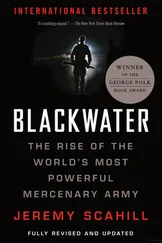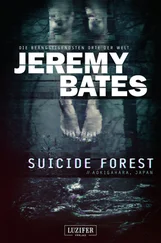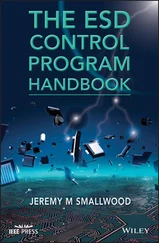Anthony Shaffer, the career Defense Intelligence operative, had hit the ground in Afghanistan in July 2003, working with the leadership targeting cell that was tasked with hunting down al Qaeda and Taliban leaders, as well as those from Hezb-e-Islami Gulbuddin (HIG), a militant movement linked to al Qaeda. Shaffer had been given an alias and carried fake documents—Social Security number, driver’s license, credit cards and a new passport. His cover name was Chris Stryker, inspired by John Wayne’s character in the 1949 film The Sands of Iwo Jima. Shaffer found close allies among the JSOC ninjas who returned to Afghanistan to renew the hunt for bin Laden, Mullah Mohammed Omar and other al Qaeda and Taliban leaders, an operation coordinated from the Bagram Air Base. As the task force members “started to roll into Bagram, the very fabric of the base changed. It brought almost a surreal energy,” Shaffer recalled. “At one point, fully loaded C-17 transport aircraft were landing at Bagram every thirty to forty-five minutes, spending about an hour off-loading and screaming rapidly back into the sky again. I could see pallet after pallet of material coming off the C-17s, neatly lined up and filled with enough hightech gear to run a country.” Shaffer said that the number of commandos and support staff for the High Value Target mission “swelled,” adding that while the original task force “had been a tight unit of some 200,” this one “was going to have more than 2,000.” As Shaffer recalled, JSOC’s force “had the best technology, the best weapons, the best people—and plenty of money to burn.”
Once JSOC took over, the task force quickly assembled a large operations center, made up of a series of plywood “B-Huts” and tents that functioned as everything from barracks to intelligence facilities. The heart of the base was the Tactical Operations Center, housed in a gigantic tent. As with the Joint Operations Center in Iraq, it was referred to as the “Death Star.” From this base, JSOC would attempt to hunt down and kill or capture the most wanted men in Afghanistan. Bearded Navy SEALs would walk around the base in civilian gear, and almost no one wore any patches to identify them to outsiders. The new JSOC presence didn’t sit well with the Green Berets and other “white” Special Ops guys who had been working for the past several years attempting to build up local connections by spending considerable time traveling throughout Afghanistan’s inhospitable terrain. Unlike the Green Berets, JSOC was not in the country to win any hearts and minds. Once JSOC took charge, the mission would no longer resemble anthropology. It was to be a manhunt, at times an assassination machine.
Early on in McChrystal’s tenure at JSOC, Shaffer briefed him several times in Afghanistan. Shaffer had been pushing for authority to conduct operations inside Pakistan and had pushed his supervisor to clear ops across the border against al Qaeda havens, saying that “the intel indicates that most of the leadership is probably now in Pakistan.” Shaffer’s superior officer told him that “for now, it’s not an option. Frankly, and this cannot leave the room, McChrystal is trying to get permission,” but “CENTCOM and the Pentagon have told us we have to stay on this side.” McChrystal was determined to change that.
PAKISTAN AND THE CIA have a long and complicated history, but particularly in the years after 9/11, the Inter-Services Intelligence (ISI) had come to accept that it would have to live with the Agency’s operatives running around its territory. At times, the two entities would cooperate, but more often the CIA found itself scrambling to thwart ISI attempts to stymie its operations, while the ISI tried to keep track of all the operatives the United States had working in Pakistan. It was a mutually agreed-upon relationship based on mistrust, dishonesty, backstabbing and, in the end, necessity. When the United States invaded Afghanistan in October 2001, forcing al Qaeda and the Taliban leadership to flee, Pakistan’s tribal areas became the epicenter of Washington’s counterterrorism operations. For certain missions, such as the capture of people suspected of a connection to the 9/11 attacks, Pakistan and the CIA would conduct joint operations. But JSOC believed the CIA was getting played and that the United States would have to operate unilaterally inside Pakistan if it was to break al Qaeda’s safe haven.
To the consternation of the ISI, President Pervez Musharraf made a secret deal with JSOC in 2002 that allowed US forces to accompany Pakistani forces on raids against suspected al Qaeda cells in the country’s tribal regions. Shaffer was elated. “The question became, of how deep, how severe, we would violate the sovereignty of Pakistan,” he told me. Rules of Engagement for US Army Rangers and other elite “terrorist-hunting units” along the Afghanistan-Pakistan border stated that “entries into PAK [were] authorized” in the following cases: hot pursuit, troops in contact with the enemy, personnel recovery—and action against “the big three”—bin Laden, Zawahiri, and Taliban leader Mullah Mohammed Omar—approved by either the CENTCOM commander or the defense secretary. As a “general rule,” these terrorist-hunting forces were to forge no deeper than ten kilometers into Pakistan. US and Pakistani authorities would technically need to be notified soon after any such actions. But the reality was different: central to the operations was Pakistan’s ability to deny foreknowledge and to denounce violations of sovereignty after the fact. The United States would strike and then Musharraf would characterize any US incursions into Pakistan as an “invasion.” But just as the JSOC campaign in Pakistan was getting started, it quickly lost steam after many of the JSOC assets originally focused on Pakistan were, once again, redirected to Iraq to confront the mounting insurgency. As a result, in 2003–2004, Pakistan remained largely a CIA-controlled operation.
IN 2004, the officials running the White House and Pentagon global manhunt issued a series of classified orders that would, when combined, prove to be an enduring blueprint for US assassinations and disregard for the sovereignty of nations the world over. The post-9/11 infighting between the CIA and Rumsfeld over who would be the prime entity responsible for running the manhunt and global wars had hit a defining moment. To fund the dramatically expanding scope of JSOC’s operations, Rumsfeld asked for a 34 percent increase in the Special Ops budget, from $5 billion to $6.7 billion. It was 2004 that secured JSOC’s place at the head of the counterterrorism table, a position it would keep through Republican and Democratic administrations. Seeking free rein for Special Operations Forces, President Bush developed an assertion that he and his successor, Barack Obama, would provide verbatim to Congress annually to justify the borderless war strategy that made the world a battlefield. “I will direct additional measures as necessary in the exercise of the right of the United States to self-defense and to protect U.S. citizens and interests,” Bush declared. “Such measures may include short-notice deployments of special operations and other forces for sensitive operations in various locations throughout the world. It is not possible to know at this time either the precise scope or duration of the deployment of U.S. Armed Forces necessary to counter the terrorist threat to the United States.”
In early 2004, Rumsfeld signed a secret order that would streamline JSOC’s ability to conduct operations and hit targets outside of the stated battlefields of Iraq and Afghanistan. Known as the Al Qaeda Network Execute Order, or AQN ExOrd, it allowed for JSOC operations “anywhere in the world” where al Qaeda operatives were known or suspected to be operating or receiving sanctuary. The order, which remains classified despite attempts by journalists to obtain it, reportedly named fifteen to twenty such countries, including Pakistan, Syria, Somalia, Yemen and Saudi Arabia, as well as several other Gulf nations. The AQN ExOrd was drafted in 2003, primarily by the Special Operations Command and the Office of the Assistant Secretary of Defense for Special Operations/Low-Intensity Conflict and was promoted by Wolfowitz and Cambone as a justification for special forces operating covertly—and lethally—across the globe. Part of the order provides for what a Special Operations source called “hot pursuit,” similar to how some state police are permitted to cross borders into another state to pursue a suspect. “That’s essentially what they have where they’re chasing someone in Somalia and he moves over into Ethiopia or Eritrea, you can go after him,” the source told me. The order was signed in the spring of 2004, but it took fifteen months for Rumsfeld to get “presidential approval” from the White House. Part of the delay was a result of “bureaucratic drag,” but the CIA also offered up resistance, seeing it as another encroachment on its mandate as the lead agency tracking al Qaeda after 9/11.
Читать дальше












